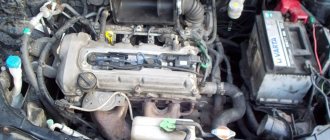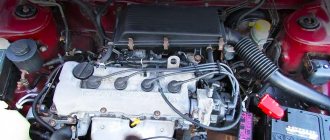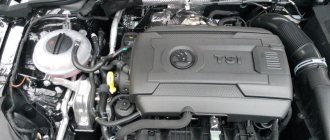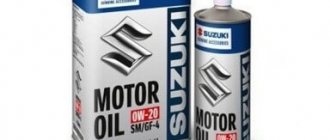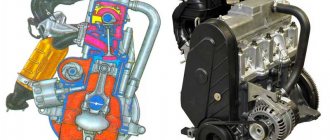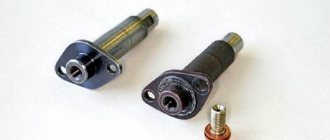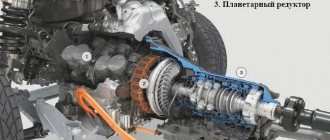Historical reference
The copyright holder of the patent for the design, production and introduction of technical modifications to the GW4G15B is the Chinese concern Great Wall Motor. Despite the fact that this company was founded in the early 90s of the last century, it has gained great popularity and is rightfully one of the leaders specializing in the manufacture of power units.
The GW4G15B engine was presented to the general public back in 2012 at the Auto Parts Expo industrial conference, which was held in Beijing.
Engine GW4G15B
When developing the Great Wall GW4G15B design, Chinese designers used advanced techniques and innovative technologies, thanks to which the new product boasts high efficiency, exceptional throughput and a long average service life. Even before this engine model entered mass production, it bore the unofficial name of a new generation small-capacity engine.
Advanced engineers pursued the goal of creating not only an efficient device with great power, but also an environmentally friendly, economical gasoline power unit.
The process of designing and producing a prototype of the 1.5-liter engine took specialists only a few months. It was specially designed to equip new versions of cars.
Its design features and technical characteristics are truly at the highest level: almost silent timing drive, lightweight cylinder block, relatively low fuel consumption.
According to the manufacturer, the design of the GW4G15B was based on the old GW4G15, which was significantly inferior in technical characteristics (no turbocharging, low power, etc.).
In essence, 4G15 is similar only in name; in the design part, these two products are radically different, both in the mechanical part and in the operating system.
Haval H2 is a 2013 crossover, which was first equipped with the GW4G15B power unit. A little later, this engine was borrowed from the Haval H6. It would be wrong to say that the GW4G15B has no analogues. For example, at the 6th international exhibition dedicated to the Chinese automobile industry, the manufacturer presented two modifications of this design: GW4B13 turbo unit with a volume of 1.3 liters and a power of 150 hp; 1-liter GW4B10T engine with a power of 111 hp. and characterized by unsurpassed environmental properties.
Motor device
On the left is the GW4G15B engine, on the right is its analogue, the 1-liter GW4B10T.
At first, the GW4G15B simply appeared in the reports of the design bureau of Great Wall Motors, where it was presented only as an engine for future generations. Then, at the 2012 international exhibition in China, the engine was shown to the public among the well-known trio of power units with a volume of 1-1.5 liters. From that time on, its mass production began, simultaneously with the introduction of advanced technologies. The basis for this engine was the naturally aspirated Toyota 1NZ-FE engine. The result is a completely decent turbocharged power unit, surpassing the original in power.
The new Chinese engine deserves the approval of experts because of many things:
- lightweight aluminum block;
- UAES multi-point injection;
- relatively low-noise timing drive with two camshafts;
- VVT phase change systems;
- small expense.
Principal parameters and main technical characteristics
From a technical point of view, the GW4G15B is a VVT four-stroke unit with an electric starter, a pair of DOHC overhead camshafts, a liquid cooling system and forced splash lubrication. A distinctive feature of the product is the presence of an integrated function responsible for multi-point electronic fuel injection.
To familiarize yourself with the key technical characteristics of the power unit, study the information given in the table:
| Technical parameter, unit of measurement | Value (parameter characteristic) |
| Nominal weight of the engine in a disassembled state (without structural elements inside), kg | 103 |
| Overall dimensions (L/W/H), cm | 53,5/53,5/65,6 |
| type of drive | Front (full) |
| Gearbox type | 6-speed, manual |
| Engine capacity, cc | 1497 |
| Number of valves/cylinders | 2020-04-16 00:00:00 |
| Power unit version | row |
| Ultimate torque, Nm/rpm | 210/2200-4500 |
| Maximum power, rpm/kW/hp | 5600/110/150 |
| Fuel consumption per 100 km, l | From 7.9 to 9.2 (depending on driving style) |
| Fuel category | Gasoline 93 grades according to GB 17930 standard |
| Compressor | Turbocharger |
| Ignition type | Electric starting system |
| Cooling system | Liquid |
| Number of crankshaft bearings, pcs. | 5 |
| Pressure in the fuel system, kPa | 380 (accuracy 20) |
| Oil pressure in the main main hose, kPa | 80 or more at 800 rpm; 300 or more at 3000 rpm |
| Amount of oil used (with/without filter replacement), l | 4,2/3,9 |
| Limit temperature at which the thermostat must operate, °C | From 80 to 83 |
| Sequence of cylinder operation | 1*3*4*2 |
Engine history: what made the Great Wall GW4G15 famous?
The popularity of the engine begins with the international conference and exhibition China International Auto Parts Expo (CIAPE), where the Great Wall company presented to the general public three improved engines with working chamber volumes from 1.0 to 1.5 liters.
The first version of the engine was produced at the beginning of 2006, but had a lot of minor flaws that shortened the service life, and therefore the manufacturing company decided to completely rework the engine. An improved version of the Great Wall GW4G15 was born in 2011 and immediately became famous due to the optimal ratio of power characteristics and production costs: at a relatively low price, Great Wall was able to provide a power unit with reliable assembly and stable dynamics during operation.
The Great Wall GW4G15 engine is characterized by ease of maintenance and a long service life, thanks to which it was able to significantly improve the quality characteristics of budget cars that were equipped with the engine. The direct fuel injection system and modern 16-valve architecture made it possible to maintain stable traction at any engine speed, and fully encapsulated cylinders greatly simplified the procedure and reduced the cost of major repairs.
Compliance with the high Euro 4 emission standard also ensured an increase in sales of the GW4G15 engine - the power unit can often be found in the Russian Federation or European Union countries.
List of main engine malfunctions and ways to eliminate them
Despite the fact that the GW4G15B has established itself as an extremely reliable and wear-resistant product, the cylinder block can be called the weak point of the power unit. Compared to its counterparts made of cast iron, it is not particularly durable.
The engine can be safely classified as a repairable unit, and the process of restoring its performance cannot be called labor-intensive. To troubleshoot a problem, it is quite possible to do with improvised means without purchasing new components and assemblies.
For example, domestic repairmen praise the engine for the ability to bore the cylinder block, as well as use the pressing process to restore the connecting rod mechanism.
To determine the cause of a motor failure, it is recommended to use an electronic diagnostic system, which with a 90% probability will accurately determine the malfunction.
Problems associated with the GW4G15B are indicated by the MI indicator light, which will flash continuously after the engine starts.
This indicates the following categories of faults:
- incorrect positioning of the camshaft and crankshaft relative to each other;
- malfunction of fuel injectors and/or malfunction of the throttle valve;
- increased voltage has arisen in the sensor circuit, which has led to an open and/or short circuit;
- problems related to the functioning of the cylinder block.
Change of oil
Like any other power unit that operates by burning fuel, the GW4G15B needs high-quality lubricants. Good oil is one of the key components that influences the length of continuous operation of the engine.
Most experts recommend giving preference to Mobil1 FS OW-40 or FS X1 SAE 5W40. The list of high-quality compounds also includes products from the Avanza and Lukoil brands.
The lubrication system can accommodate 4.2 liters of oil; in case of replacement, the consumption ranges from 3.9 to 4 liters.
Replacement should be performed at least every 10,000 km. mileage
Possibilities for tuning the power unit
Engine efficiency and performance can be significantly improved by adjusting fundamental parameters.
One of these methods is chipping (reflashing the control unit using innovative technologies). This takes a relatively short period of time and will cost from 10 to 15 thousand rubles. An increase in torque up to 35%, a reduction in fuel consumption, an increase in engine power (25-30%) - this is only the smallest list of bonuses that a power unit that has undergone the chip tuning procedure will receive.
It is recommended that such an event be entrusted to qualified specialists, since in case of critical errors problems may arise related to vehicle acceleration.
Other tuning options for the GW4G15B include:
- Roughening the internal passages of the cylinder head (BC). As a result, the dynamics of the air flow will change, which will lead to a decrease in turbulence and an increase in engine output.
- Boring BC. This will significantly increase the engine size, and therefore its power. To organize such an event, you will need special tools and equipment, since boring is done from the inside and maximum adherence to the correct geometry is required.
- Mechanical tuning based on a stroker kit. To do this, you need a ready-made set of structural elements (rings, bearings, connecting rod, crankshaft, etc.), which is manufactured in production conditions by specialized companies. Due to such tuning, the volume of the power unit increases, and, as a result, torque. However, this modification has a significant drawback: since the stroke of the pistons increases significantly, they wear out faster.
GW4G15B tuning options
Mitsubishi 4G15 1.5 l engine
The Chinese engine can be made even more efficient if the basic parameters are adjusted. First of all, this is chipping - flashing the electronic control unit using the latest modules. It doesn’t take much time, the service costs 10-15 thousand rubles, but the result is visible immediately. As a result of chip tuning, fuel consumption will decrease, the power of the GW4G15B will increase by 20-25%, and torque by 30-35%. If the procedure is carried out incorrectly, some difficulties may arise when accelerating the car.
The cylinder head can be qualitatively modified if attention is paid to the roughness of the internal ducts. Obviously, irregularities interfere with the passage of air flow, and smoothing bends and channels will have a positive effect on the stability of air flow
Turbulence will be reduced, and as a result, greater engine performance can be achieved. By boring the cylinder block, the volume of the unit can be significantly increased. The procedure is carried out using special equipment, the cylinders are ground from the inside, ensuring the most correct geometry. Naturally, such elements will require large-diameter pistons. Thus, there is a better alignment of the cylinders with the pistons, which has a positive effect on the compression ratio. Installation of a ready-made stroker kit. Many modern companies produce kits for mechanical tuning. This includes a performance crankshaft, connecting rods, pistons, rings and bearings. Thanks to such innovations, engine volume changes and torque increases, but the pistons wear out faster due to increased stroke.
Main versions of vehicles equipped with GW4G15B
This modification of the power unit is suitable for installation under the hoods of two automobile brands:
- Hover, including brands:
- H6;
- CC7150FM20;
- CC7150FM22;
- CC7150FM02;
- CC7150FM01;
- CC7150FM21;
- CC6460RM2F;
- CC6460RM21.
- Haval, including versions:
- H2 and H6;
- CC7150FM05;
- CC7150FM04;
- CC6460RM0F.



